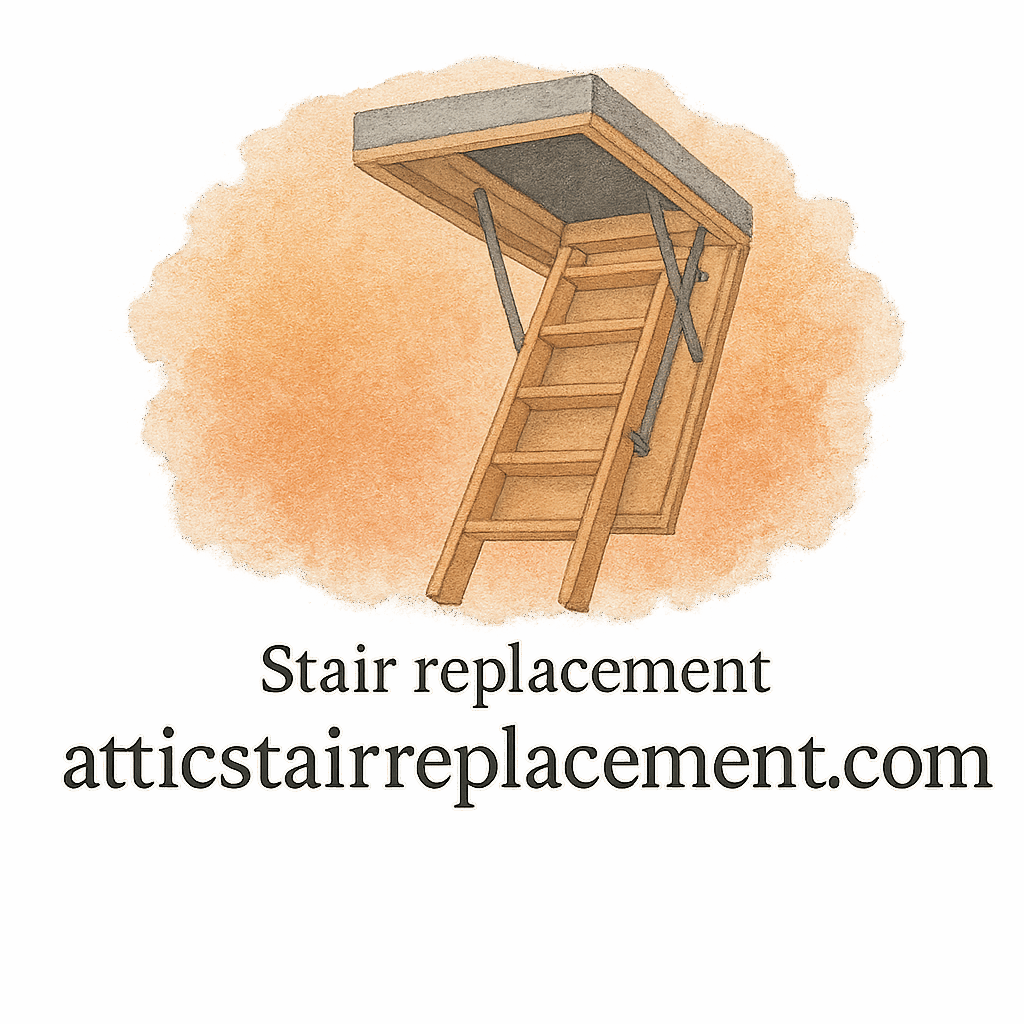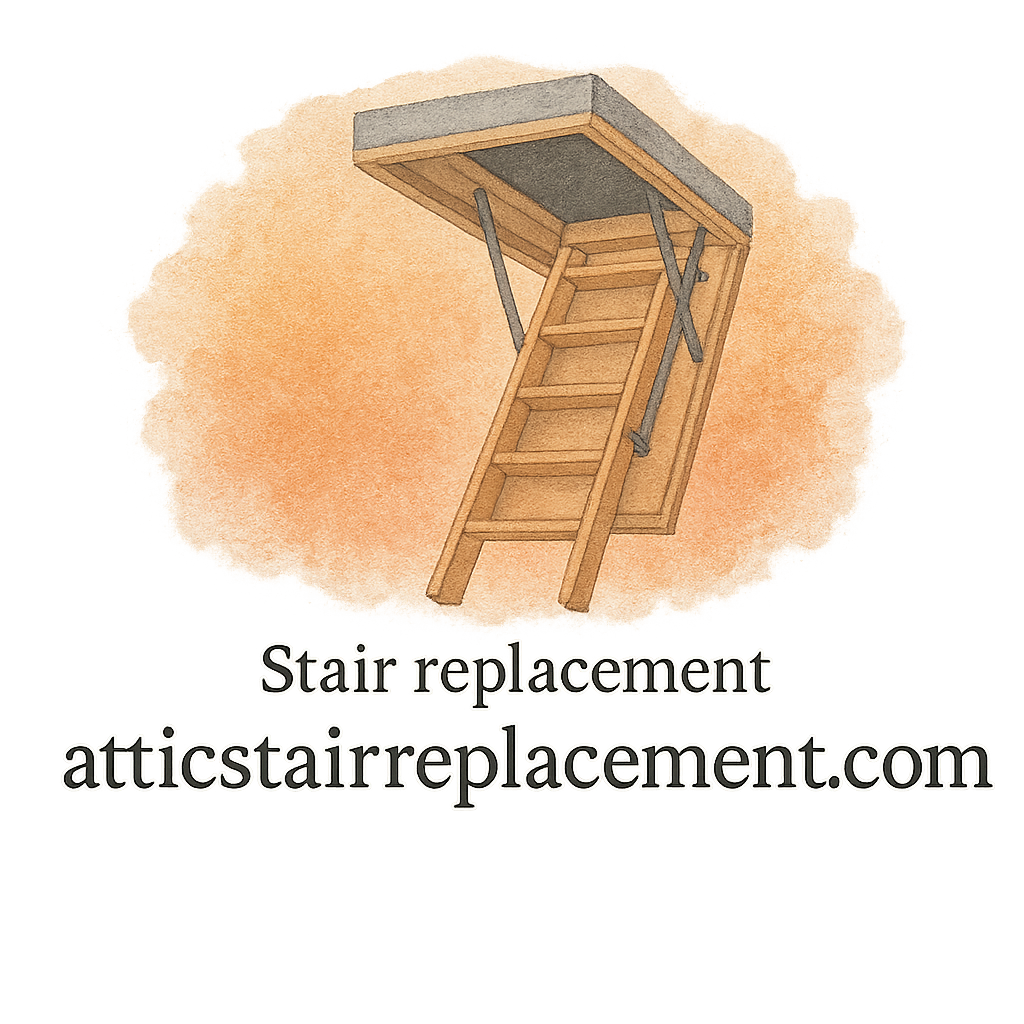Introduction
Ever walked up your attic stairs and felt them wobble beneath your feet? That unsettling creak isn’t just annoying—it’s a sign you might need to think about safety upgrades. Your attic stairs aren’t something you probably use every day, but when you do, they should feel safe, secure, and reliable. In this guide, we’ll walk through six signs your attic stair replacement requires safety upgrades and why addressing these issues now can save you from bigger headaches (and potential accidents) later.
Why Attic Stair Safety Matters
Hidden Dangers of Old Attic Stairs
Old attic stairs can hide more danger than you think. Weak steps, rusty hinges, or even outdated designs can turn a quick trip into the attic into a risky move. Most homeowners don’t realize that attic stairs are load-bearing structures that need regular care and attention—just like any other part of your home.
The Role of Safety in Home Improvement
When it comes to home improvement, safety is non-negotiable. It’s not just about convenience; it’s about protecting your family and preserving the value of your property. An attic stair upgrade is one of those small projects that packs a big punch when it comes to peace of mind.
Sign #1: Creaking or Unstable Steps
Causes of Weak or Wobbly Stairs
If every step you take sounds like a haunted house scene, it’s a red flag. Creaks and wobbles usually mean loose screws, weakened joints, or deteriorating materials.
Risks of Ignoring This Warning
Ignoring unstable steps can lead to falls or injuries, especially when carrying boxes or holiday decorations. This is one of the earliest signs you should check your attic stairs for safety upgrades.
Sign #2: Rusty or Damaged Hardware
Metal Fatigue and Rust Issues
Metal components like hinges, bolts, and springs are crucial for attic stair safety. Over time, they rust, corrode, or weaken due to humidity and temperature changes in the attic.
Why Hardware Integrity Is Critical
If the hardware fails, the entire staircase could collapse. That’s why replacing rusty parts—or even the whole system—is often the safer choice. Learn more in our maintenance and repair guide.
Sign #3: Stairs Don’t Fully Lock or Open
Common Locking Mechanism Failures
If your stairs don’t stay locked in place, you’re essentially walking on a trap. Faulty locking mechanisms often come from misalignment, bent metal, or worn springs.
How This Affects Daily Safety
Imagine climbing halfway up and having the stairs suddenly shift or collapse. That’s an accident waiting to happen. This is one of the clearest signs your attic stairs need professional expert advice.
Sign #4: Cracks or Splits in Wood
Signs of Wood Damage
Wooden attic stairs often crack or split after years of heavy use or moisture exposure. If you see visible damage, it’s a clear indicator of weakness.
When Repairs Aren’t Enough
Minor cracks can sometimes be repaired, but larger splits usually mean the structure has been compromised. At that point, replacement is safer than repair.
Sign #5: Weight Limit Concerns
Understanding Heavy-Duty Stair Ratings
Not all attic stairs are designed for the same load. If your current model was installed decades ago, it might not be rated for today’s needs—like carrying up bulky storage bins. Look for models labeled heavy-duty or strong.

Overloading Risks
Overloading a weak set of stairs is like playing with fire. It might hold once or twice, but eventually, it will give out—potentially with you on it.
Sign #6: Outdated or Non-Compliant Design
Old vs. Modern Safety Standards
Building codes evolve, and older attic stairs often don’t meet today’s safety standards. Features like slip-resistant steps, sturdy handrails, and reliable locks weren’t always part of the design.
Why Upgrades Are Worth the Investment
Modern attic stair replacements not only look better but also provide better safety and durability. Think of it as a remodel that combines functionality with peace of mind. If you’re considering a home project, this is a smart investment.
DIY vs. Professional Safety Upgrades
Benefits of a DIY Project
For handy homeowners, a DIY installation can save money and give you control over the project. It’s a satisfying job if you follow the right steps and safety precautions.
When to Call a Contractor
If your stairs show multiple safety concerns—or if you’re not confident in your carpentry skills—it’s best to hire a contractor. A pro can ensure your stairs meet all current safety codes.
Cost Factors to Consider
Budget-Friendly Safety Options
Not every safety upgrade needs to break the bank. Reinforcing steps, replacing hardware, or tightening bolts are cost-effective fixes.
Hidden Costs to Watch For
Watch out for hidden costs like unexpected wood damage, ceiling modifications, or additional insulation needs during replacement.
Tips to Maintain Attic Stair Safety
Regular Inspection Checklist
Make it a habit to check for loose screws, cracks, or squeaks every few months. Regular inspections prevent small issues from turning into big repairs.
Preventative Maintenance Steps
Lubricate hinges, tighten bolts, and keep the stairs clean and dry. Following these maintenance steps will extend the life of your attic stairs.
Best Products for Attic Stair Safety
Expert-Recommended Models
Some attic stairs are built to last. Look for durable, heavy-duty, and safety-certified products. For trustworthy recommendations, visit our product reviews.
Where to Find Trusted Reviews
Not all reviews are equal. Stick to expert-backed advice from trusted sources like expert guides to make the right purchase.
Conclusion
Your attic stairs may not be top of mind every day, but they play a big role in keeping your home safe and functional. If you’ve noticed any of these six warning signs—unstable steps, rusty hardware, faulty locks, cracked wood, weight limit issues, or outdated design—it’s time to act. Whether you tackle it as a DIY project or hire a pro, upgrading your attic stairs ensures safety, durability, and peace of mind.
FAQs
1. How often should I inspect my attic stairs for safety?
Every 3–6 months is a good rule of thumb, especially if you use them frequently.
2. Can I reinforce my attic stairs instead of replacing them?
Yes, small issues like loose screws or minor rust can be fixed. But major cracks or failing hardware usually require replacement.
3. What’s the average lifespan of attic stairs?
Typically, 10–15 years with regular care, though heavy use or poor maintenance can shorten this.
4. Do modern attic stairs support more weight?
Yes, most modern models are designed with higher weight ratings and better safety features.
5. Is it safe to install attic stairs on my own?
If you’re skilled with tools and follow a detailed install guide, yes. Otherwise, hire a pro.
6. What’s the biggest mistake homeowners make with attic stairs?
Ignoring small signs of wear. Tiny cracks or squeaks can escalate into major mistakes if left unchecked.
7. Where can I find reliable attic stair safety advice?
Check our expert advice section for professional tips, guides, and product recommendations.


